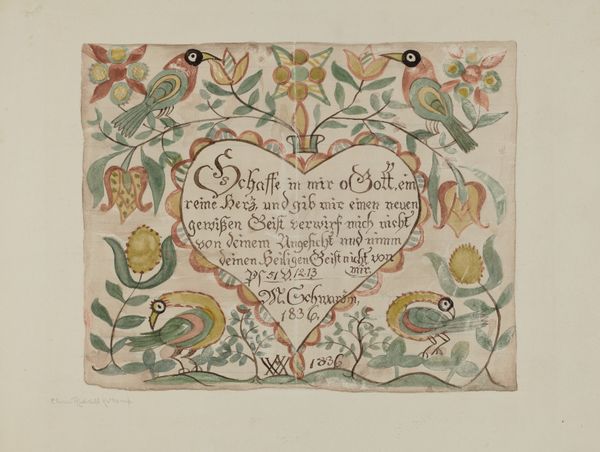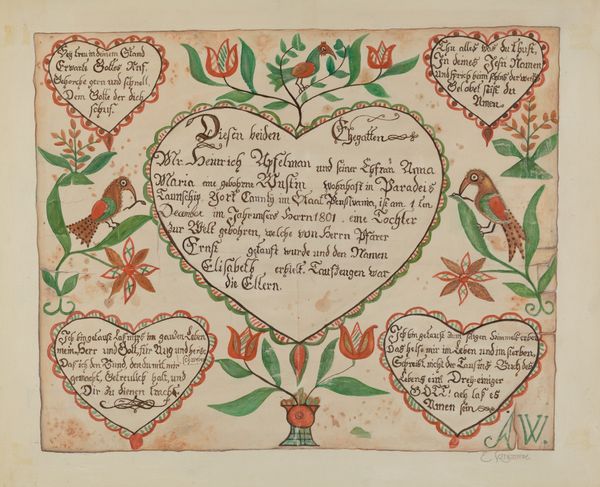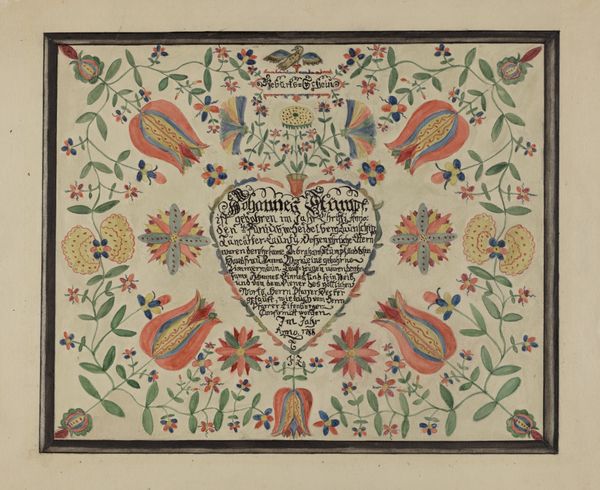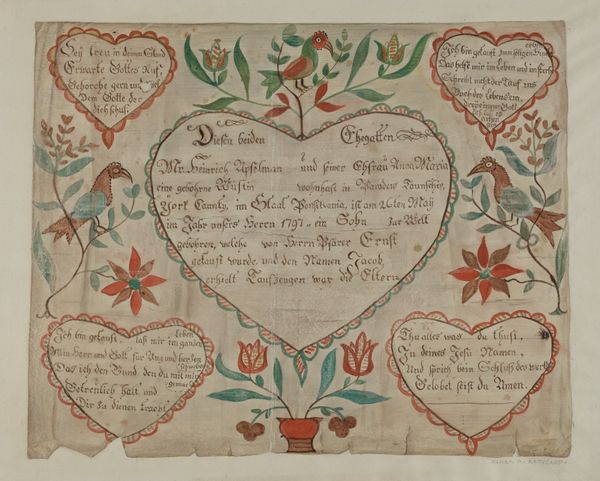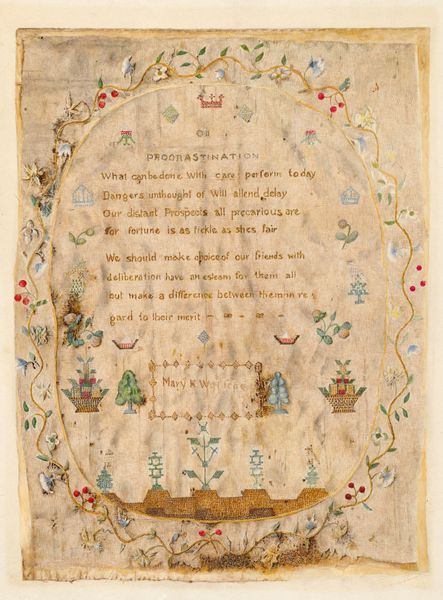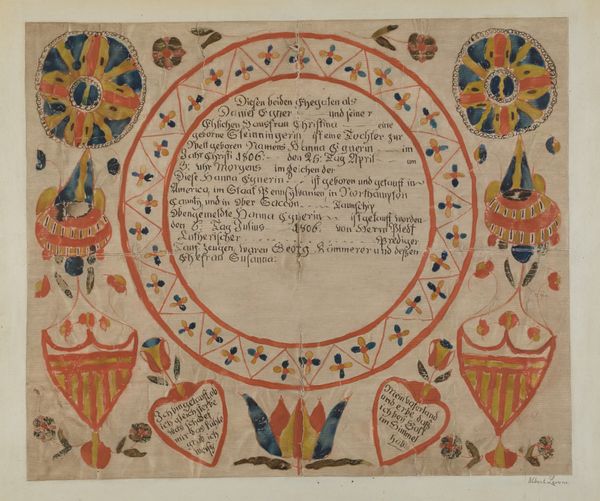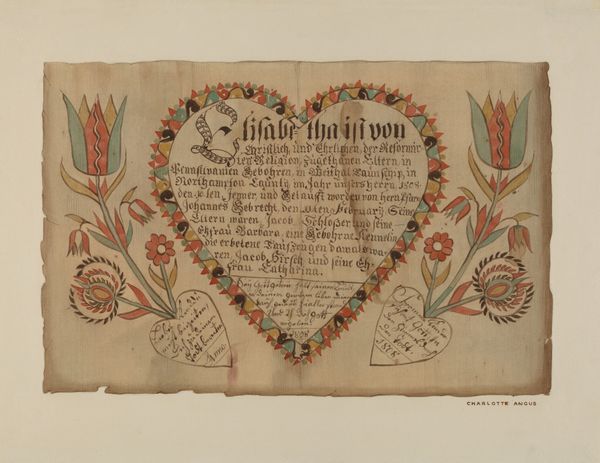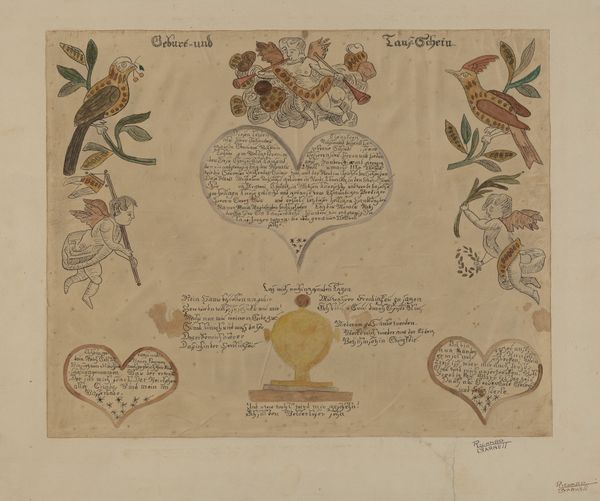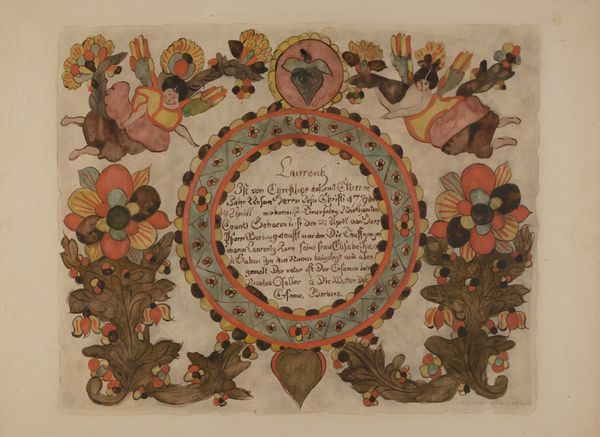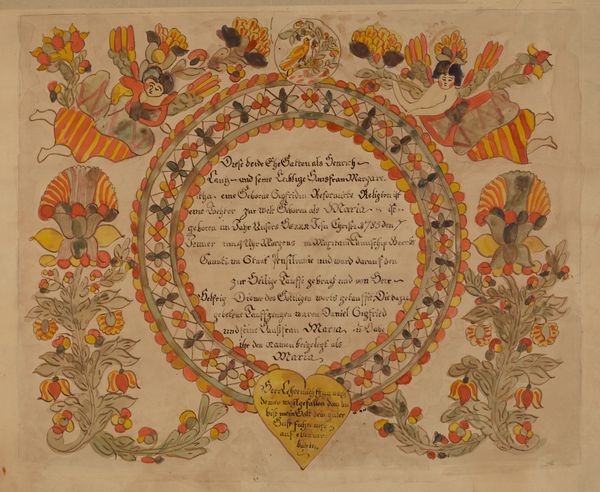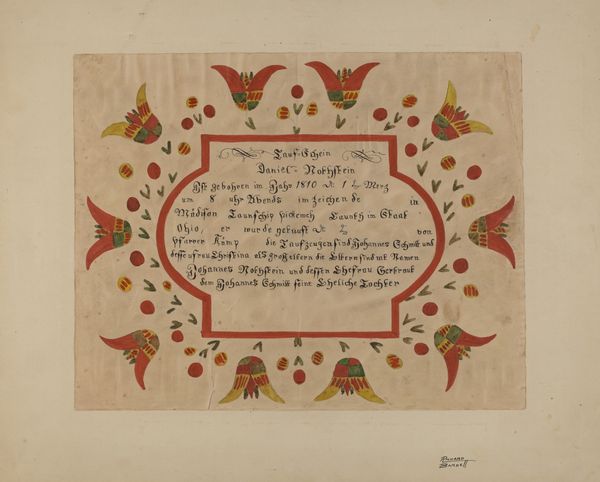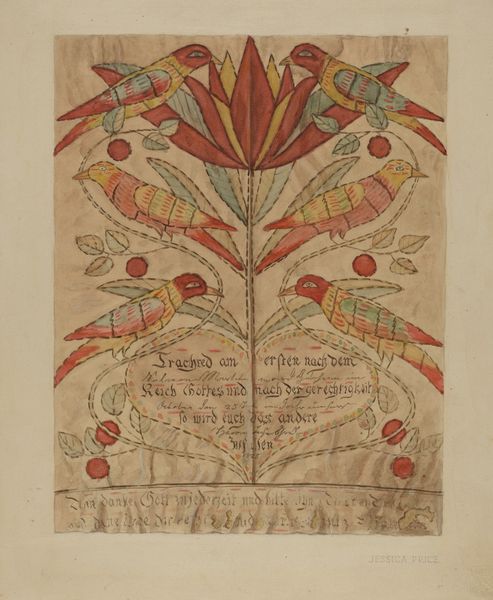
drawing, print, textile, watercolor
#
portrait
#
drawing
#
water colours
# print
#
textile
#
watercolor
#
folk-art
#
geometric
#
decorative-art
#
watercolor
Dimensions: overall: 37.3 x 46 cm (14 11/16 x 18 1/8 in.) Original IAD Object: 12 1/4" high; 15 1/2" wide
Copyright: National Gallery of Art: CC0 1.0
Curator: This intriguing watercolor and print, titled "Fractur," was created by Charles Roadman sometime between 1935 and 1942. The imagery clearly resonates with folk art traditions. Editor: It certainly does! My immediate impression is a quaint and somewhat faded textile, perhaps a baptismal certificate or something commemorative. I’m really drawn to how the materials reflect a kind of hand-made intimacy. Curator: That is a fantastic observation! The Fraktur tradition is deeply connected to Pennsylvania Dutch folk art, specifically involving the decoration of important documents, like births and baptisms. The birds, for instance, can symbolize blessings and spiritual guidance, a wish of good omen. The heart frames the message inside with the geometric figures in between representing flowers perhaps. Editor: Absolutely. Knowing the process by which such an image comes into being is critical. The labor-intensive creation of the print – the engraving, the dyeing, the potential weaving if indeed it becomes a textile – speaks volumes about the community and its value system. Also, note that signature “Chas. Roadman” on the lower corner, indicating it must have been a print copy, which enables a wider spread through different consumers. Curator: Precisely! And I believe the choice of watercolor is quite deliberate, its softness evoking a sense of fragility and fleeting time. It echoes a world filled with symbolism relating back to Pennsylvania German traditions and history. The message inside the heart has religious roots, where names, birthdates, and religious events would have been added or personalized. It’s fascinating how the material connects directly to spiritual values of a people, which makes this creation that much more special. Editor: Indeed. Thinking about its consumption, what does it mean for this type of folk-art-meets-high-art piece to enter a museum space? I believe its story keeps evolving, now displayed to visitors like you and I to decipher its meaning, like piecing together its origin, material, meaning, and relevance today. Curator: Yes, a piece like "Fractur" invites us to ponder not only its visual beauty but also its intricate connections to tradition, material culture, and community memory. Editor: Exactly. It is so intriguing how these seemingly simple processes—watercolor, print—create these layers of significance that transcend their time.
Comments
No comments
Be the first to comment and join the conversation on the ultimate creative platform.
